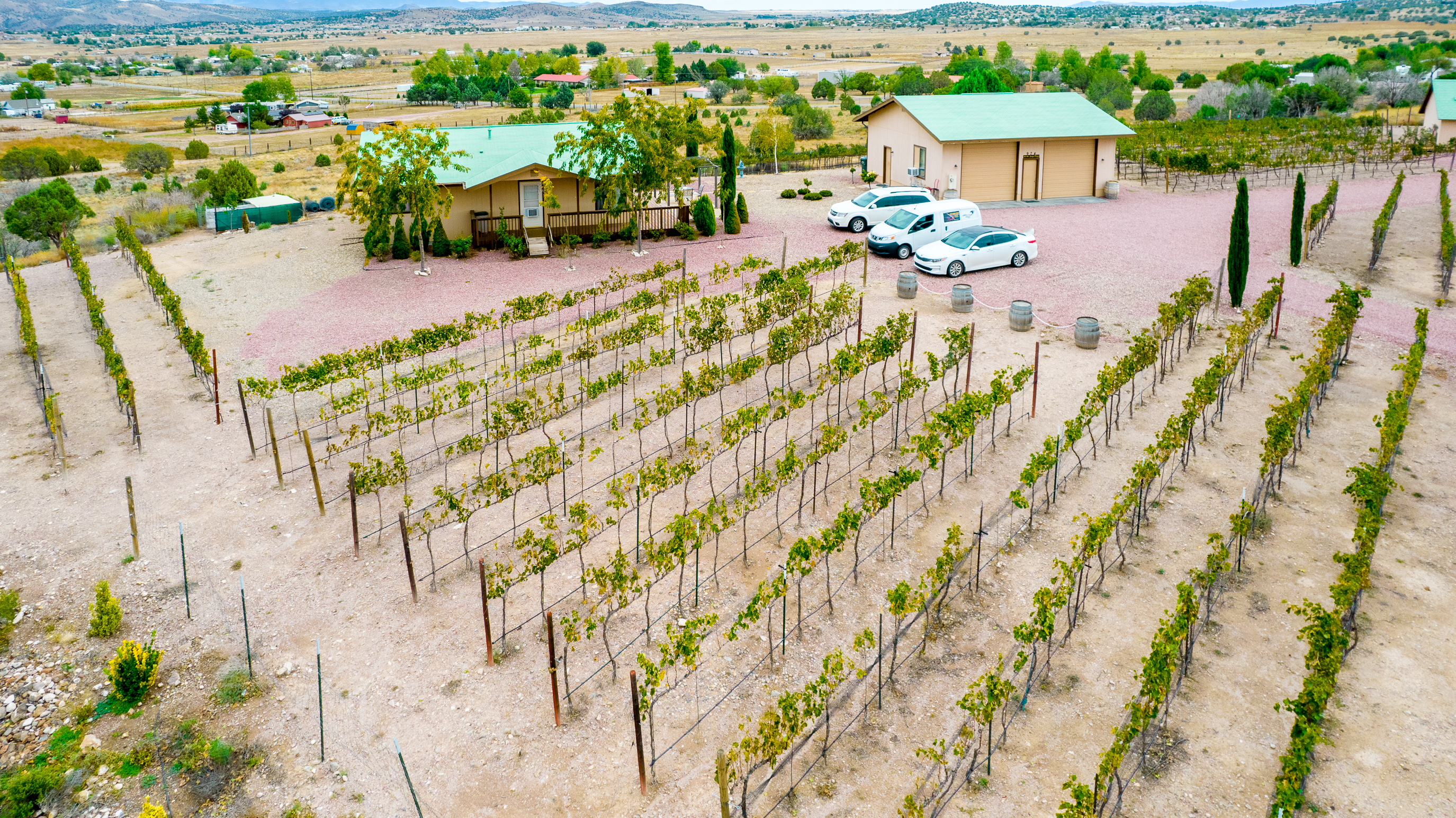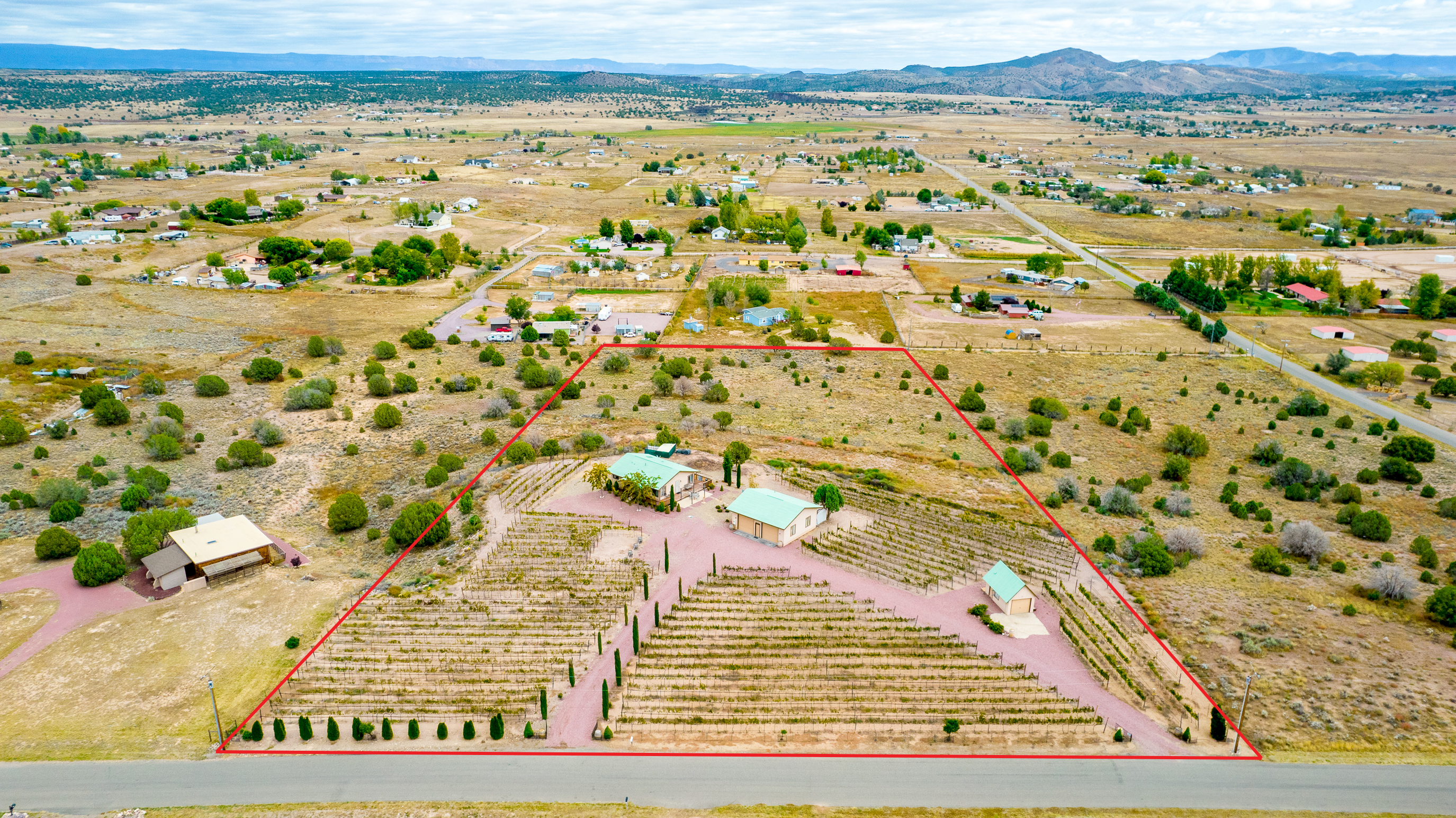OUR BLOG

Maricopa County Real Estate Market Insights: Trends and Predictions for 2024

Exploring the Best Vineyards in Arizona: A Guide to the State's Thriving Wine Regions and Exceptional Wines
Discovering the Wonders of Vineyards in Arizona
When people think of vineyards and winemaking, their minds often drift to the lush landscapes of Napa Valley or the historic regions of Tuscany. However, an unexpected gem has been quietly making its mark in the world of viticulture: Arizona. With its unique climate and diverse geography, Arizona offers a surprising yet delightful experience for wine enthusiasts. In this blog, we'll explore the wonders of vineyards in Arizona, from the history and unique terroir to the must-visit wineries and the exceptional wines they produce.
A Brief History of Arizona Winemaking
The story of Arizona's winemaking dates back to the late 17th century when Spanish missionaries planted the first grapevines to produce sacramental wine. However, it wasn't until the late 20th century that commercial winemaking began to take root. The pioneering efforts of Dr. Gordon Dutt, a soil scientist from the University of Arizona, played a significant role in revitalizing the state's wine industry. Dr. Dutt's research revealed that Arizona's soil and climate were remarkably similar to those of some of the world's best wine regions, such as the Rhone Valley in France.
In 1973, Dr. Dutt founded the first experimental vineyard in Sonoita, and by 1983, he and his colleagues established the state's first commercial winery, Sonoita Vineyards. This marked the beginning of Arizona's modern wine industry, which has since grown to include over 100 wineries across the state.
### The Unique Terroir of Arizona
Arizona's unique terroir is one of the key factors that set its vineyards apart. The state's diverse geography, which ranges from desert valleys to high-elevation plateaus, creates a variety of microclimates ideal for growing different grape varieties.
#### Elevation and Climate
Many of Arizona's vineyards are located at elevations between 3,500 and 5,500 feet above sea level. This high elevation provides several advantages for grape growing:
1. Temperature Variability: The significant temperature fluctuations between day and night (diurnal temperature variation) help grapes retain their acidity while developing complex flavors. Warm days allow the grapes to ripen fully, while cool nights preserve their natural acidity.
2. Sunlight Exposure: Arizona enjoys abundant sunshine, with over 300 sunny days per year. This ample sunlight helps grapes achieve optimal ripeness and flavor concentration.
3. Dry Climate: The arid climate reduces the risk of fungal diseases that can plague vineyards in more humid regions. This allows for more sustainable and organic farming practices.
#### Soil Composition
The soil composition in Arizona's wine regions is also highly conducive to grape growing. The soils are typically well-drained and rich in minerals, with a mix of volcanic, alluvial, and calcareous materials. These soils provide excellent drainage, which is crucial for preventing waterlogged roots and promoting healthy vine growth. Additionally, the mineral-rich soils contribute to the unique flavor profiles of Arizona wines.
### Notable Wine Regions in Arizona
Arizona's wine regions are primarily concentrated in three main areas: Sonoita-Elgin, Willcox, and Verde Valley. Each region offers distinct characteristics and a unique wine-tasting experience.
#### Sonoita-Elgin
Located in southeastern Arizona, the Sonoita-Elgin region is the state's oldest and most established wine region. Situated at an elevation of around 4,800 feet, this area benefits from a mild climate and well-drained soils. The rolling grasslands and stunning mountain vistas create a picturesque backdrop for wine tasting.
Notable Wineries:
- Sonoita Vineyards: As Arizona's first commercial winery, Sonoita Vineyards holds a special place in the state's winemaking history. Visitors can enjoy a variety of wines, including their award-winning Mission-style wines.
- Callaghan Vineyards: Known for its bold reds and Rhone-style blends, Callaghan Vineyards has received acclaim for its expressive and well-balanced wines.
- Arizona Hops and Vines: This unique winery combines wine and craft beer tasting, offering a fun and relaxed atmosphere for visitors.
#### Willcox
The Willcox region, located in southeastern Arizona, is known for producing some of the state's finest wines. The high desert plateau, with elevations ranging from 4,200 to 5,000 feet, provides an ideal environment for grape growing. The sandy loam soils and cool climate contribute to the development of complex and flavorful wines.
Notable Wineries:
- Keeling Schaefer Vineyards: This family-owned winery specializes in Rhone varietals, producing outstanding Syrah, Grenache, and Mourvèdre wines.
- Zarpara Vineyard: Known for its elegant and well-structured wines, Zarpara Vineyard offers a delightful tasting experience in a beautiful setting.
- Bodega Pierce: With a focus on sustainable farming practices, Bodega Pierce produces exceptional wines that showcase the unique terroir of the Willcox region.
#### Verde Valley
Situated in central Arizona, the Verde Valley wine region has gained recognition for its high-quality wines and stunning landscapes. The region's diverse microclimates, ranging from 3,000 to 4,000 feet in elevation, allow for the cultivation of a wide variety of grape varieties. The Verde River and Oak Creek provide a source of water for irrigation, contributing to the region's lush vineyards.
Notable Wineries:
- Page Springs Cellars: Nestled along the banks of Oak Creek, Page Springs Cellars offers a serene and scenic setting for wine tasting. Their wines, including Syrah, Petite Sirah, and Viognier, have garnered numerous awards.
- Caduceus Cellars: Founded by rock musician Maynard James Keenan, Caduceus Cellars has become one of Arizona's most renowned wineries. Their bold and distinctive wines reflect the rugged beauty of the Verde Valley.
- Javelina Leap Vineyard & Winery: This family-owned winery focuses on producing small-batch, handcrafted wines that capture the essence of the region. Visitors can enjoy a variety of red and white wines in a charming and inviting tasting room.
### The Exceptional Wines of Arizona
Arizona's vineyards produce a wide range of grape varieties, allowing winemakers to craft diverse and exceptional wines. While the state is known for its Rhone and Bordeaux-style wines, it also produces impressive Italian and Spanish varietals. Here are some of the standout wines from Arizona:
#### Reds
1. Syrah: Arizona's Syrah wines are known for their rich and robust flavors, with notes of dark fruit, pepper, and spice. The high elevation and ample sunlight contribute to the wine's concentration and complexity.
2. Grenache: Grenache thrives in Arizona's warm climate, producing wines with bright red fruit flavors, floral aromas, and a hint of earthiness. These wines are often well-balanced and versatile.
3. Cabernet Sauvignon: Arizona's Cabernet Sauvignon wines exhibit bold flavors of blackcurrant, plum, and cedar, with firm tannins and a long finish. The region's unique terroir adds a distinct character to this classic varietal.
#### Whites
1. Viognier: Viognier is one of Arizona's standout white varietals, known for its aromatic qualities and lush texture. The wines often feature notes of apricot, peach, and honeysuckle, with a touch of minerality.
2. Chenin Blanc: Arizona's Chenin Blanc wines are refreshing and vibrant, with flavors of green apple, pear, and citrus. The region's cool nights help preserve the grape's natural acidity.
3. Malvasia Bianca: This aromatic white grape variety produces wines with exotic floral and tropical fruit aromas. Arizona's Malvasia Bianca wines are often crisp, aromatic, and perfect for warm-weather sipping.
### Visiting Arizona's Vineyards
A visit to Arizona's vineyards offers a unique and memorable wine-tasting experience. Here are some tips to make the most of your visit:
1. Plan Your Route: Arizona's wine regions are spread out, so it's important to plan your route in advance. Consider focusing on one region at a time to fully immerse yourself in the local wine culture.
2. Check Winery Hours: Many wineries have limited hours or require appointments for tastings. Check their websites or call ahead to ensure they are open during your visit.
3. Dress Comfortably: Arizona's climate can vary greatly depending on the season and elevation. Dress in layers and wear comfortable shoes for walking around the vineyards.
4. Stay Hydrated: The dry climate and high elevation can lead to dehydration. Drink plenty of water and take breaks to stay hydrated throughout your wine-tasting adventure.
5. Explore Beyond Wine: In addition to wine tasting, many wineries offer tours, events, and food pairings. Take the opportunity to learn more about the winemaking process, enjoy a picnic, or attend a special event.
### Conclusion
Arizona's vineyards offer a captivating journey into the world of wine, with a rich history, unique terroir, and exceptional wines that rival those of more well-known wine regions. Whether you're a seasoned wine enthusiast or a curious newcomer, a visit to Arizona's wine country promises a delightful and unforgettable experience. From the rolling hills of Sonoita-Elgin to the high desert of Willcox and the scenic beauty of Verde Valley, Arizona's vineyards are waiting to be explored and savored. So raise a glass and toast to the wonders of Arizona's winemaking – a true testament to the state's diverse and thriving wine industry.
Search all Arizona Properties: https://searchazproperty.com
To learn more about vineyards for sale in Arizona, be sure to CONTACT US
https://searchazproperty.com | 2026 | PRIVACY POLICY




Facebook
Instagram
LinkedIn
Youtube
TikTok